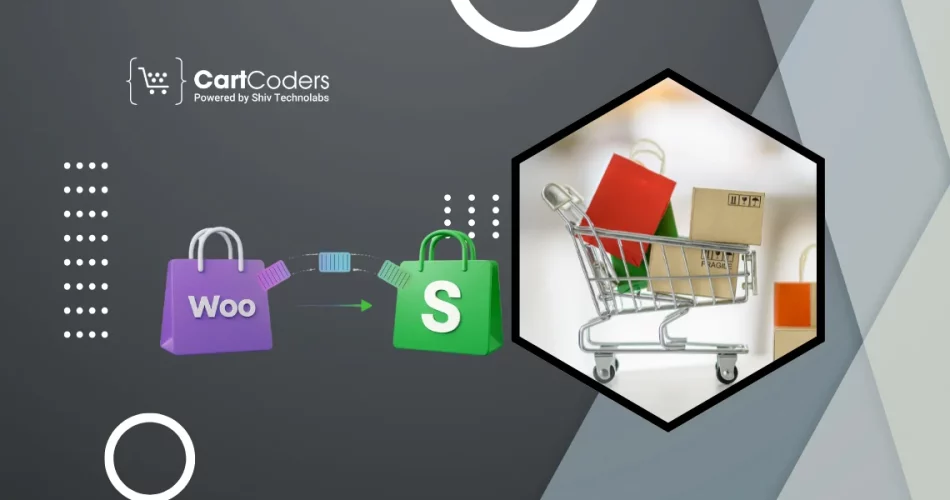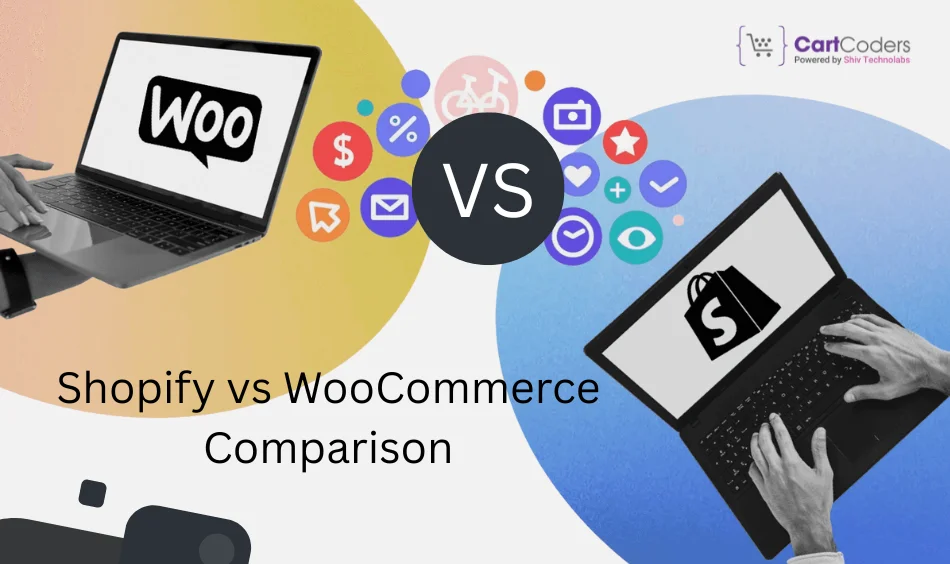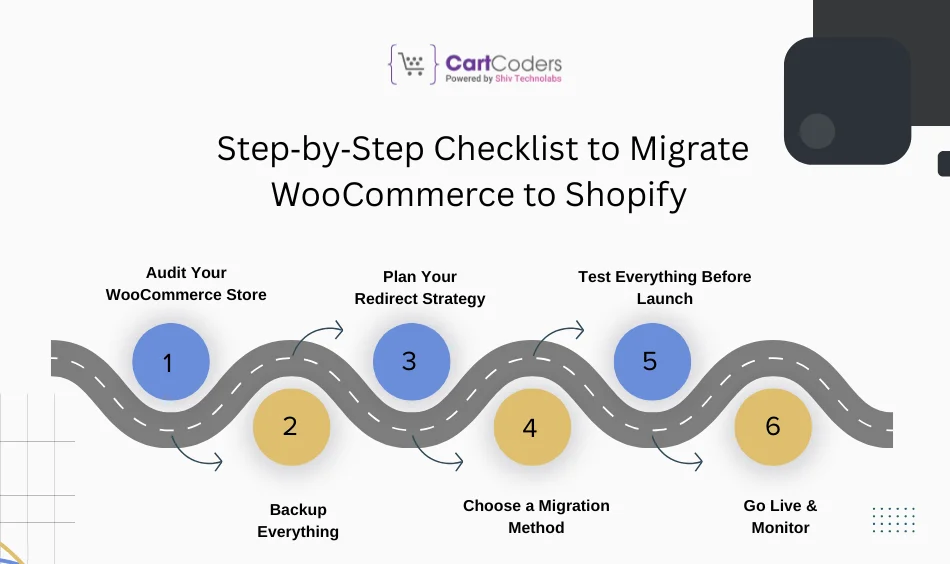Custom Engagement Solutions
Unlock tailored solutions with a free, no-obligation strategy session.
Expert Developers & Engineers on Demand
Scale Your Team with Skilled IT Professionals
Expert Guidance for Digital Transformation

2025 is proving to be a pivotal turning point for online retail platforms, and the shift is unmistakable: merchants switch from WooCommerce to Shopify in large numbers. Reports indicate that Shopify has $1 trillion in global online sales, surpassing WooCommerce in terms of adoption, innovation, and merchant satisfaction.
Why is that the case? Running an eCommerce store today is about more than just listing items. It’s about global reach, built-in AI automation, multi-channel shopping, and top-tier support. Shopify has made significant strides in this area in 2025, whereas WooCommerce still relies heavily on plugins and server tweaks.
If your business is still on WooCommerce, ask yourself: Are you constantly repairing plugin issues while your rivals build smarter stores on Shopify? Then we will discuss why now is the best time to transfer your WooCommerce store to Shopify and what benefits you will gain.

Before describing the advantages of migrating, let’s examine some of the key differences between the two platforms in 2025.
Shopify has grown into a robust platform. Here are the latest upgrades this year:
WooCommerce, on the other hand, is still a WordPress plugin that requires you to handle all of these things, such as themes, hosting, caching, and plugin updates.
WooCommerce to Shopify migration benefits you in various ways. Let’s explore why WooCommerce to Shopify migration in 2025 is worth the investment.
Shopify’s AI Store Builder redefines how a storefront is created. Within minutes, it builds a fully functioning store based on basic inputs. Shopify Magic generates optimized product descriptions, FAQs, automated replies, and more. Meanwhile, WooCommerce requires you to format product pages manually or rely on separate AI plugins.
Planning to sell across borders? Shopify now offers automated tariff and duty calculators, real-time currency display, and global domains through Shopify Markets. WooCommerce requires managing multiple plugins, manual tax configuration, and handling inconsistent regional support.
The Horizon Framework launched in 2025 delivers outstanding mobile loading speeds and fully flexible layouts. Shopify’s checkout system supports real‑time discounts, upsells, and AJAX cart flows without altering core code. For WooCommerce, customizing checkout usually requires developer help and risks compatibility issues.
With Shopify POS v10, inventory is automatically maintained in the same way between both: your retail store and your online store. It provides a unified omnichannel experience with support systems that enable scheduling pickups, returning in-store, and scanning barcodes. WooCommerce setups depend on third‑party tools that don’t always integrate smoothly.
Shopify handles PCI-DSS compliance, SSL certificates, CDN to support global needs and automatic security patches. When using WooCommerce, you take up responsibility of any security vulnerability in any plugin, server upgrades, as well as server uptime. Shopify keeps your store secure without extra effort on your part.
Do you need to handle B2B processes, thousands of SKUs or coordinate automated activities? Shopify Flow (now available on more tiers) offers visual automation, inventory triggers, and multi‑store logic. WooCommerce lacks comparable capabilities unless you engineer them manually.
Shopify’s fees are straightforward. Monthly plans, no transaction charges with Shop Pay, and no hidden plugin costs. WooCommerce is not entirely free once you factor in hosting, the expenses of acquiring various plugins, developer assistance, and maintenance costs.
The App Store provided by Shopify enables users to work with CRM, fulfillment, subscriptions, AI analytics, and many other features. WooCommerce’s plugin ecosystem is smaller, and conflict risks can impair performance or cause your store to break.
Shopify offers 24-hour support, priority support tickets, live chat, and access to Shopify Experts worldwide. WooCommerce support often depends on a plugin, theme, or hosting service, leaving you to search for providers.
The stores load quickly anywhere in the world, thanks to Shopify’s global CDN and well-developed server infrastructure. You do not need to optimize cache parameters, or you do not have to worry about heavy WordPress themes. A slower page load is a common problem with WooCommerce stores, particularly on shared servers.

A Shopify migration checklist will help you avoid missing any crucial steps when migrating from WooCommerce to Shopify, ensuring a smooth process.
Assess your current setup:
Export all vital data:
Maintain search engine rankings by mapping your URLs and adding 301 redirects inside Shopify. This prevents losing traffic after switching.
Select based on your budget and tech comfort:
Use a staging domain before going live:
Launch your Shopify store with a promotional push. After launch, track:
Wondering if now is the ideal moment to switch? These signs suggest it’s time:
WooCommerce is slowing down your store. Traffic and plugins accumulate and the speed of the site declines. Shopify delivers optimized performance by default.
You’re experiencing rapid growth. If you’re expanding product lines or teams, Shopify helps you scale with multi‑store and automation features.
International selling is your goal. Shopify’s native tools streamline cross‑border trade without plugin overload.
You need built‑in AI tools. Shopify includes AI for content and replies, unlike WooCommerce.
Tech issues are consuming your time. Shopify’s hosted model and support free you from maintenance hassles.
Thinking about switching from WooCommerce to Shopify without sacrificing SEO, customer data, or peace of mind?
That’s where CartCoders steps in. We’re specialists in migrating stores, whether for small boutiques or extensive catalogs. We help you launch your Shopify store cleanly, quickly, and smoothly from day one.
What You Get With CartCoders:
Explore our Shopify Migration Services. Let’s move your store forward the right way.
Speaking the truth, the transition of WooCommerce to Shopify in 2025 is not simply an upgrade. It is a strategic move that will future-proof your business. Shopify offers AI-powered automation, cross-border selling, speedy themes, and reliable support, all without requiring you to clone yourself into an IT team.
When WooCommerce slows you down, Shopify puts speed, scale, and modern abilities under your control. You obtain the user-friendly, scalable, and safe platform.
And when you are ready to make that jump, do not do it alone.Outsource to CartCoders, your migration specialists. Whether it is a WooCommerce to Shopify transfer or complete post-launch support, we take care of all the technicalities, leaving growth in your hands.
Projects delivered in 15+ industries.
95% retention rate, building lasting partnerships.
Serving clients across 25+ countries.
60+ pros | 10+ years of experience.